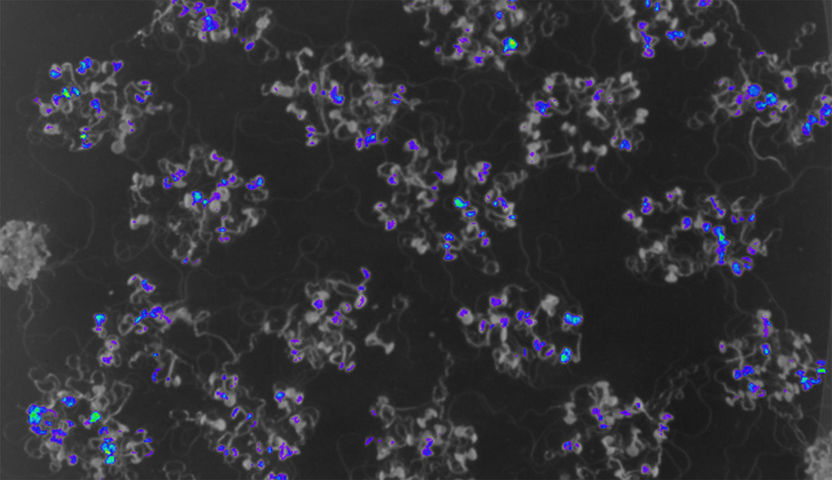Deadly E. Coli Strain Sequenced with Roche GS Junior System by HPA Scientists
Provides Community Most Complete Assembly to Date
The deadly E. coli O104 strain that has killed dozens and hospitalized thousands across Europe has been sequenced using 454 Life Sciences’ benchtop GS Junior sequencing system to generate the “most accurate and detailed genetic analysis to date” of this particularly virulent strain. The sequencing was performed by scientists at the UK’s Health Protection Agency and the data has been uploaded onto the National Centre for Biotechnology Information (NCBI) website for use by the scientific community.
The results suggest that the strain has a unique combination of features containing genes from two different types of E. coli as well as its own genes. The sequencing assembly shows that the strain contains two extrachromosomal elements or plasmids which may factor into its pathogenicity. In essence, this strain of E. coli may have ‘picked up’ some extra genetic material along the way.
“Despite the availability of short read sequencing data from this E. coli outbreak strain for over a week, the short fragmented assembly has offered only limited information on gene order and gene composition,” said Chinnappa Kodira, Director of Genomics at 454 Life Sciences. “This long contiguous assembly enables much better characterization of genome structure, horizontal gene transfer and pathogenic islands which are crucial for understanding the emergence of new virulent bacterial strains.” The addition of this new long read sequence data from the GS Junior System offers the community the most contiguous sequence to date, and provides a comprehensive assembly on which subsequent genomic analysis can be performed.
The long shotgun reads generated using the 454 Sequencing System allowed the HPA scientists to assemble almost the entire genome into a comprehensive and detailed genomic map of this pathogen within hours. The sequence data will assist in on-going efforts to identify the source of the outbreak, and understand how the strain may have evolved.
“The combination of fast turnaround time and high-quality, long sequencing reads makes the GS Junior an ideal research platform for rapid and comprehensive whole genome analysis in novel pathogen outbreak situations,” said Christopher McLeod, President and CEO of 454 Life Sciences. “We are gratified that 454 Life Sciences is helping to improve health care by enabling a quick response to shed some light on potential epidemics.”
Other news from the department science

Get the life science industry in your inbox
By submitting this form you agree that LUMITOS AG will send you the newsletter(s) selected above by email. Your data will not be passed on to third parties. Your data will be stored and processed in accordance with our data protection regulations. LUMITOS may contact you by email for the purpose of advertising or market and opinion surveys. You can revoke your consent at any time without giving reasons to LUMITOS AG, Ernst-Augustin-Str. 2, 12489 Berlin, Germany or by e-mail at revoke@lumitos.com with effect for the future. In addition, each email contains a link to unsubscribe from the corresponding newsletter.
More news from our other portals
Last viewed contents
Category:Developmental_neuroscience
Subthalamic_nucleus
Medicalization
Hermann_Sahli
Biocide
Generalized_epilepsy_with_febrile_seizures_plus
Interleukin_1

Improved experimental setup for analysis of circadian rhythms using the nightshade - An improved Plant In Vivo Imaging protocol for circadian rhythms experiments using the NightShade

An Intro to Characterization of Biomolecules Using Analytical Ultracentrifugation



















































